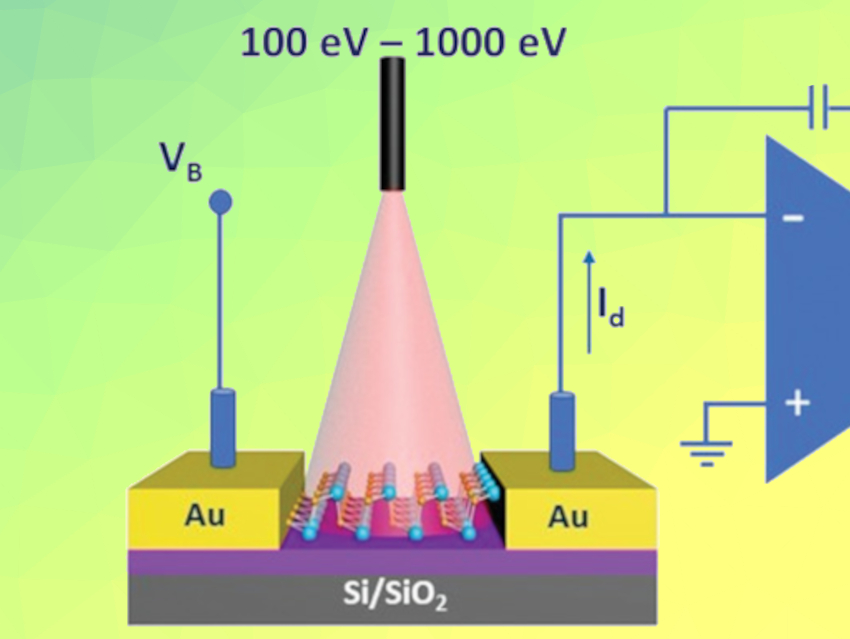X-ray-based methods are often very useful in structural characterization. X-rays can be classified as soft or hard: Hard X-rays with photon energies over 10 keV are used, e.g., in radiology or security systems, while soft X-rays with photon energies of 0.1–10 keV are used, for example, in microscopy or spectroscopy. Soft X-rays can be used in the direct probing of biological specimens in aqueous media. For such measurements, X-rays in the “water window” region of 200–600 eV are used to minimize absorption from the aqueous medium. There is a need for high-performance soft X-ray detectors.
Babar Shabbir, Jacek J. Jasieniak, Monash University, Clayton, Australia, Nasir Mahmood, Quaid-I-Azam University, Islamabad, Pakistan, and colleagues have developed a direct soft X-ray detector based on ultrathin tin sulfide (SnS) nanosheets. The team used a liquid-metal based exfoliation method to obtain high-quality, large-area nanosheets. First, molten tin droplets were sulfurized, and then a Si/SiO2 substrate was brought into contact with a sulfurized liquid metal droplet to allow the exfoliation of SnS nanosheets.
The researchers built X-ray detectors (pictured) by depositing gold electrodes directly onto exfoliated SnS nanosheets on Si/SiO2 substrates. The photocurrent under soft X-rays was then measured. The team found that the devices can efficiently detect soft X-ray photons within the water window with high sensitivity and low response times. The properties of the developed system compare favorably with existing direct soft X-ray detectors.
- Soft X‐ray Detectors Based on SnS Nanosheets for the Water Window Region,
Babar Shabbir, Jingying Liu, Vaishnavi Krishnamurthi, R. A. W. Ayyubi, Kevin Tran, Sherif Abdulkader Tawfik, M. Mosarof Hossain, Hareem Khan, Yingjie Wu, Bannur Nanjunda Shivananju, Rizwan Ur Rehman Sagar, Asif Mahmood, Adnan Younis, Md Hemayet Uddin, Syed A. Bukhari, Sumeet Walia, Yongxiang Li, Michelle J.S. Spencer, Nasir Mahmood, Jacek J. Jasieniak,
Adv. Funct. Mater. 2021.
https://doi.org/10.1002/adfm.202105038


